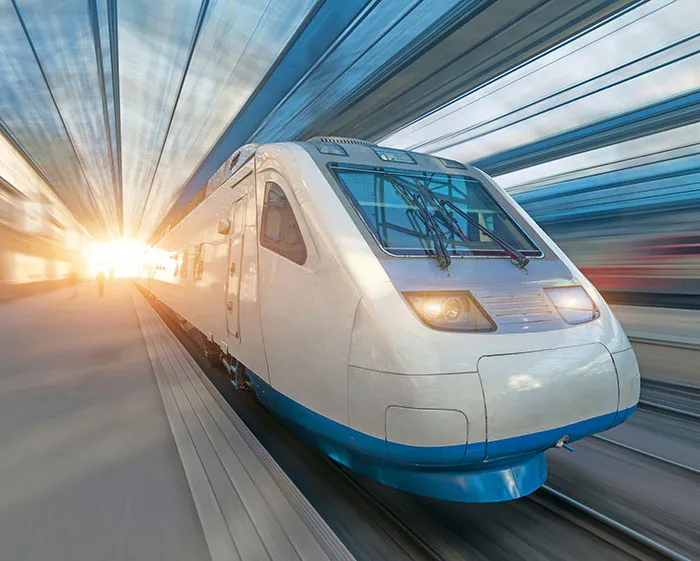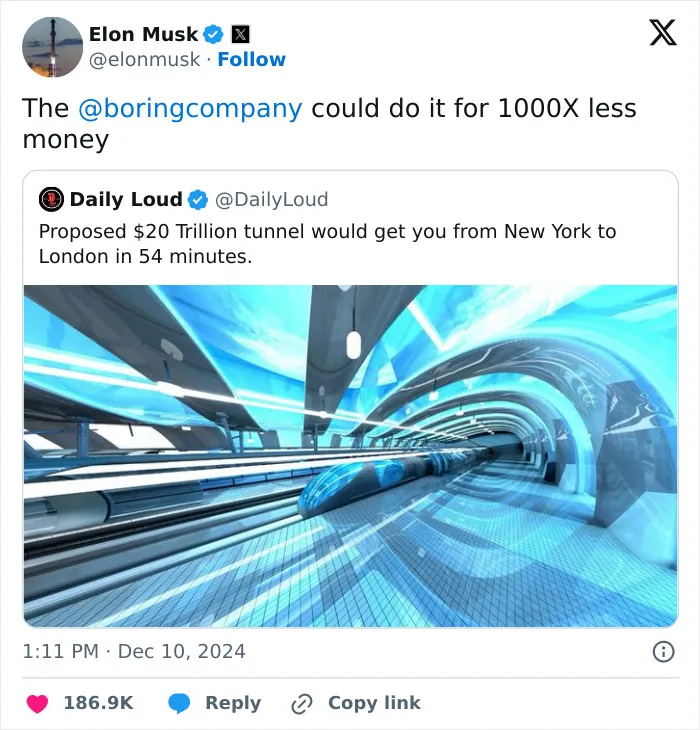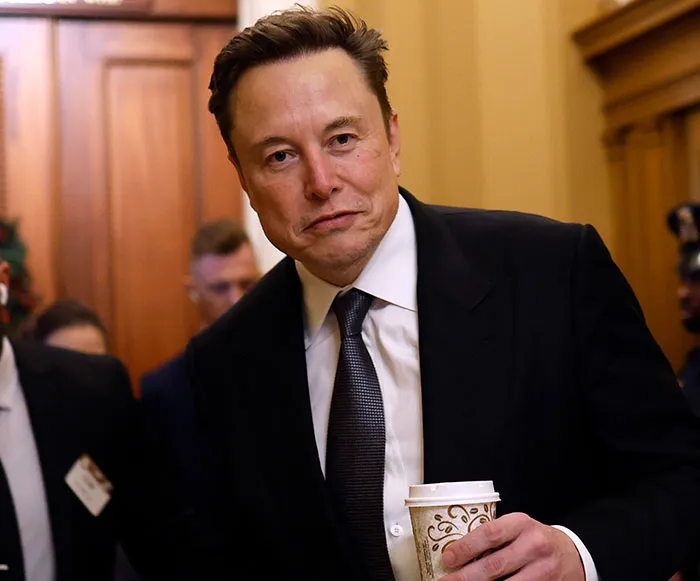Elon Musk has once again hinted at a potentially groundbreaking innovation – this time a revolutionary underground tunnel that will connect London and New York.
There have been discussions for some time about a project that envisages a transatlantic tunnel between New York and London.
This tunnel could take travellers from the British capital to the metropolis of New York in just 54 minutes – a distance of around 5,500 kilometres.

It was originally estimated that the cost of such a project would be a staggering $25 trillion, but so far no company has presented a concrete plan to build such a tunnel.
However, Elon Musk claims it would be possible at a fraction of that price.
On X (formerly Twitter), he explained that The Boring Company – an infrastructure and tunnel construction company he founded – could implement the project “1,000 times cheaper”.
The tech billionaire shared a tweet that said, “A proposed $20 trillion tunnel would take people from New York to London in 54 minutes.” Musk added the message, “The @boringcompany could do that for 1000x less money.”
Building a transatlantic tunnel between the US and the UK would take years, dwarfing even the Channel Tunnel. The Channel Tunnel, which connects England and France, is 23.5 kilometres long and took six years to build. If a transatlantic tunnel were built at the same pace, the project would take a whopping 782 years, according to Newsweek .
Despite the excitement, there are no final designs for a transatlantic tunnel yet. Concepts range from a submerged tunnel on the sea floor to a tunnel supported on stilts to a floating tunnel anchored to the sea floor by cables. Each of these concepts presents significant technical challenges and high costs.

This ambitious claim follows Musk’s ongoing efforts to revolutionize global travel through SpaceX’s Starship rocket – a vehicle designed to transport passengers between two cities on Earth in less than an hour.
If this vision becomes reality, according to previous SpaceX statements, passengers could travel from London to New York in just 30 minutes, from New York to Shanghai in 39 minutes and from Zurich to Sydney in 50 minutes.
Musk recently stressed that Starship could enable such “Earth-to-Earth” travel. One user on X wrote: “Under Trump’s FAA, @SpaceX could even get Starship Earth-to-Earth approved in a few years – that would enable travel between any city in the world in under an hour.”
Musk responded: “It’s now possible.”
However, the tech tycoon is known for making bold promises that are not always kept. In 2016, he announced that Tesla vehicles would be fully autonomous by 2017. But even in 2024, Tesla’s Autopilot still requires driver monitoring.
He predicted that autonomous robotaxis would become a reality by 2020, but this dream has not yet come true either.
While a transatlantic tunnel is still a long way off, an underwater road and rail tunnel is currently being built connecting southern Denmark with northern Germany.

The 18-kilometer-long Fehmarnbelt Tunnel will run more than 40 meters under the Baltic Sea and is expected to significantly shorten travel time between the two countries.
This project is one of the largest infrastructure projects in Europe and will be the longest underwater tunnel in the world once it is completed in 2029.
Denise Juchem, spokeswoman for Danish company Femern A/S , which is implementing the project, said the tunnel would significantly reduce congestion on existing road and rail routes.
“For commuters, this means a faster and more reliable connection between Denmark and Germany, which significantly reduces travel time and makes everyday life much easier,” Juchem told Euronews .
“The Fehmarnbelt Tunnel will revolutionize travel between Scandinavia and Central Europe by creating a more direct and reliable connection.”
In addition, the tunnel is intended to reduce dependence on road traffic and encourage a switch to rail.
“This switch will significantly reduce CO2 emissions as rail transport is more efficient and environmentally friendly than road transport,” added Juchem.
“Ultimately, the 18-kilometer-long sunken tunnel was chosen as the best solution – because of its lower environmental impact, less vulnerability to weather and cost-effectiveness,” she concluded.

